Your message has been sent.
We’ll process your request and contact you back as soon as possible.
The form has been successfully submitted.
Please find further information in your mailbox.



Software is no longer just a tool; it’s evolving into an autonomous system. The latest trends in software development aren’t just about efficiency — they’re about rewriting how businesses operate. Every major shift starts on the fringes, then becomes inevitable. What was experimental five years ago is now standard fare. What looks like an edge case today will dominate industries tomorrow.
AI isn’t just assisting — it’s deciding. Blockchain is moving past speculation and into real-world applications. Low-code is turning anyone with an idea into a builder. The latest software development trends are reshaping the economy at scale, not through incremental improvements, but by automating entire workflows and decision-making processes.
Technology is leverage, and leverage compounds. Those who recognize the shift early will build the future. Those who hesitate will be forced to adapt to a world they no longer control.
Let’s break down the latest software development trends in 2025 and why they matter.
One of the software development industry trends I’m watching closely is agentic AI. AI is evolving from a reactive assistant into an autonomous operator. This isn’t just another step in automation — it’s software making decisions, planning, and optimizing itself without human input.
This shift isn’t theoretical. By 2028, a third of enterprise software will include agentic AI. Within just a few years, AI agents will autonomously handle at least 15% of daily business decisions. That means fewer routine tasks bogging down teams. Right now, 70% of sales reps waste time on administrative work, and 66% of customer service reps handle tasks unrelated to customers. AI won’t just streamline operations — it will redefine them.
Most executives still underestimate what’s coming. Nine out of ten senior tech leaders admit they don’t fully grasp generative AI’s impact on business. That’s a serious blind spot. AI isn’t just a tool — it’s leverage. Businesses that integrate it early will outpace those still trying to figure it out. The way I see it, the gap between AI-first organizations and those playing catch-up will only widen.
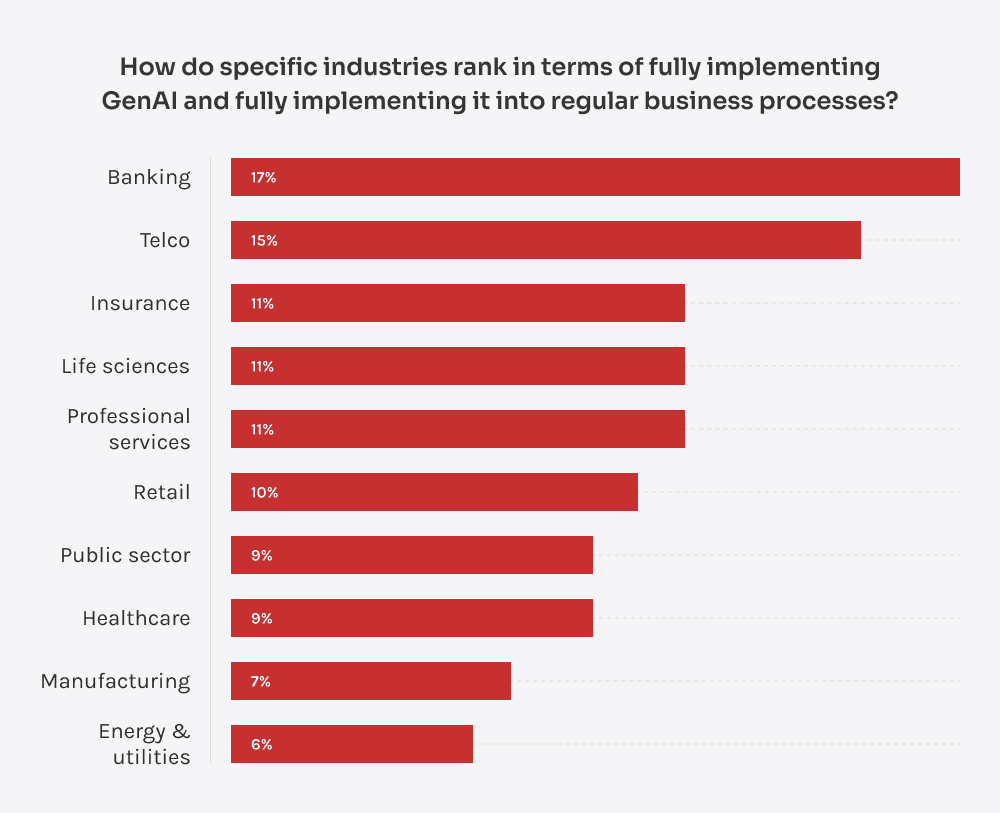
More autonomy requires stronger governance. As AI agents take on independent roles, organizations must establish ethical guidelines, transparent decision-making frameworks, and oversight mechanisms to prevent unintended consequences. Without these safeguards, automation becomes a liability instead of an advantage.
I see agentic AI as more than just another step in automation. It’s a shift in how decisions are made. The idea that software can operate with goals and adaptability was once theoretical — now, it’s becoming a necessity. Some companies will move fast and build entire workflows around AI. Others will hesitate, unsure of what to delegate. The gap between the two won’t be obvious at first, but over time, it’ll be the difference between companies that scale effortlessly and those drowning in inefficiencies.
“We’re already seeing AI go way beyond task automation — it’s actually making decisions now. In a few projects, it’s taken over stuff we used to manage manually, like task delegation or workload balancing. It’s wild how fast that shift is happening. If you’re still waiting to “see how it plays out”, you’re already behind.”

Philip Tikhanovich
Head of Big Data and AI
One of the software engineering trends that’s impossible to ignore is generative AI. A year ago, some questioned whether it was just another tech fad. That debate is over. Generative AI isn’t just here to stay — it’s becoming the foundation of modern software development. The companies that embrace it will build faster, ship more efficiently, and outcompete those that don’t.
AI-powered coding tools like Cursor, Bolt.new, and Claude Code are no longer just suggesting snippets. They’re refactoring codebases, optimizing performance, and even explaining logic in real time. Developers using these tools aren’t just writing code faster — they’re offloading entire sections of their workflow to AI. The shift is massive. Right now, AI is already writing over 55% of developers’ code, according to GitHub.
The economic momentum is undeniable, too. The global generative AI market is projected to hit $356.10 billion by 2030, growing at a compound annual rate of 46.47%. In the U.S. alone, it will reach $220.27 billion by 2032. Investors see what’s happening — AI-powered development tools alone attracted $25.2 billion in funding in 2023, with companies like Microsoft, Google, and Amazon betting big on autonomous coding. Why? Because software is the highest-leverage work in the world, and AI is making it exponentially cheaper and faster.
But this isn’t just about speed. By 2028, 33% of enterprise applications will have AI making autonomous decisions, up from less than 1% today. Software won’t just follow instructions — it will start thinking. And that changes everything.
Of course, there are risks — AI-generated code needs oversight. Security vulnerabilities, licensing issues, and unintended biases are real concerns. But trying to slow down AI because of risks is like trying to halt the internet in 1995. The market rewards those who adapt, not those who resist.
One of the latest software development trends that’s gaining serious traction is the convergence of AI and IoT for sustainability. For years, sustainability was a buzzword — something companies talked about but didn’t act on. That’s changing. Regulation is tightening, energy costs are rising, and businesses that don’t adapt will get outcompeted by those that do.
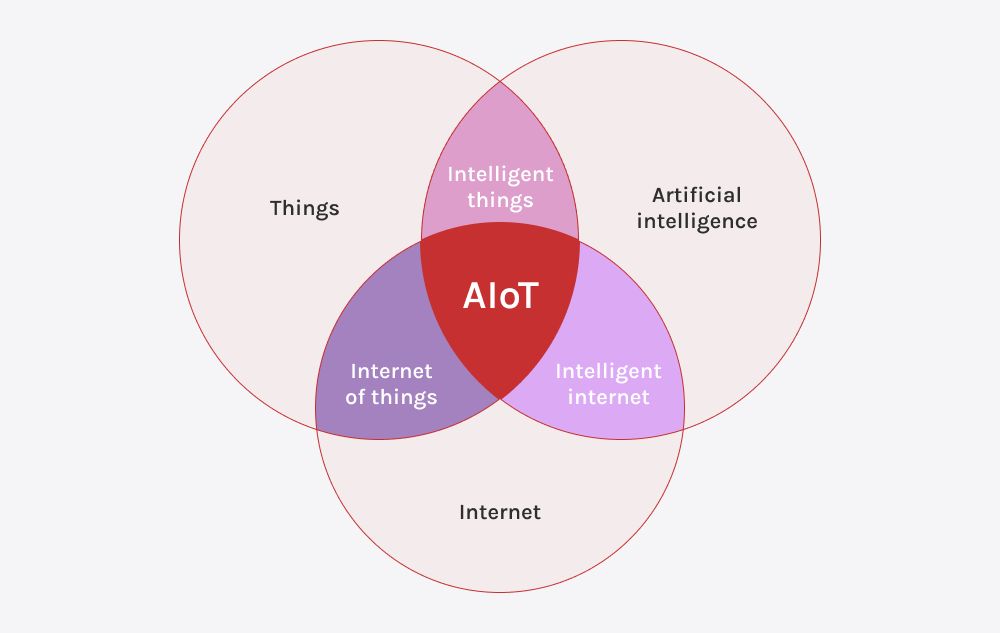
The numbers make it clear. The global AIoT (artificial intelligence of things) market is valued at $171.40 billion in 2024 and is expected to grow at an annual rate of 31.7% through 2030. AI-powered IoT isn’t just improving operational efficiency — it’s transforming how energy is used, managed, and optimized.
Smart grids are dynamically adjusting power distribution in real time, cutting waste. AI-driven building systems optimize heating, cooling, and lighting based on occupancy and weather, reducing operational costs. AI-powered predictive maintenance is already extending the lifespan of infrastructure by identifying failures before they happen. The result? Lower costs, longer asset lifespans, and compliance without the headache.
Governments are taking this seriously. The Intergovernmental Panel on Climate Change (IPCC) has set a clear target for carbon neutrality by 2050. To meet these goals, businesses must rethink their computing infrastructure. AI-optimized power grids, liquid immersion cooling for data centers, and energy-efficient AI chips are already being explored to cut back on energy consumption.
The upfront costs are high. Retrofitting old systems isn’t cheap. But in business, those who embrace change early profit the most. AI-powered sustainability isn’t a future bet — it’s an inevitability. The only question is who will move fast enough to benefit.
“We’re doing more projects where AI and IoT are helping companies hit their energy goals without even trying that hard. Like HVAC systems that just figure it out based on the weather and how many people are in the building. It’s not just about saving money — it’s smart, efficient, and finally scalable.”

Eugene Govor
Head of IoT
Technology isn’t just getting smarter — it’s getting quieter. The best advancements don’t demand attention; they fade into the background, shaping our surroundings without us even noticing. That’s what ambient intelligence is all about — technology that understands context, anticipates needs, and acts before we even think to ask.
The global ambient intelligence market size is projected to grow to USD 172.32 billion by 2032, reflecting the increasing adoption of AI-driven environments that seamlessly adapt to human behavior and optimize efficiency across industries.
You can already see it taking shape. Your home learns your habits — lights dim as you wind down, temperatures adjust before you feel discomfort, security tightens without a word. Retail is becoming checkout-free. No scanning, just walk in, pick up what you need, and leave. Hospitals are becoming proactive. Wearables and sensor-laden rooms detect early signs of illness and adjust care automatically. No appointments, no delays — just better outcomes.
For businesses, this is more than just convenience — it’s a new level of efficiency. AI-powered logistics systems track inventory in real time, reducing waste and cutting costs. Smart factories use sensor-driven automation to optimize production without manual oversight. Every inefficiency that used to be accepted as the cost of doing business is now a problem AI can solve.
But there’s a catch. The more invisible technology becomes, the more trust it requires. Privacy concerns aren’t an afterthought — they’re central to adoption. If people feel like they’re being watched, tracked, or manipulated, they’ll opt out. Companies that get this right — balancing intelligence with security — will define the space.
Ambient intelligence is still in its experimental phase, but not for long. The businesses deploying it responsibly today will have a massive advantage in delivering frictionless, intuitive user experiences. Those who ignore it will be left explaining why their products still require effort.
Blockchain is finally moving beyond speculation. For years, it was mostly associated with cryptocurrencies, but the real shift is happening now: enterprise adoption, tokenization of real-world assets, and seamless financial infrastructure. The technology is no longer an experiment. It’s becoming a necessity.
The financial sector is leading the charge. Banking and financial services now represent the largest end-use industry for blockchain, accounting for 20% of the total market. High-value assets like real estate, fine art, and commodities are being tokenized, enabling fractional ownership and increasing liquidity. Major players like JPMorgan and BlackRock are integrating blockchain into financial systems to boost transparency and market efficiency.
But tokenization is just the beginning. Businesses are moving toward enterprise-grade blockchain solutions, ditching public, retail-focused chains. Modular and Layer-2 solutions, like Substrate and zkEVM rollups, offer speed, security, and compliance tailored for high-stakes operations. Infrastructure solutions now make up 40% of the blockchain market, as corporations prioritize interoperability over speculation.
Decentralized finance (DeFi) is also expanding beyond Ethereum. Multi-chain liquidity markets, omni-chain protocols, and decentralized bridges are breaking down barriers that once fragmented the ecosystem. The rise of CeDeFi (centralized-decentralized finance) is helping traditional institutions transition into blockchain-powered systems without overhauling everything at once.
Blockchain adoption is no longer hypothetical. The USA remains the largest blockchain market in North America, while Germany, the UK, Spain, France, and Italy are leading in Europe. Tokenization, regulatory clarity, and infrastructure development are driving real use cases at scale.
From my perspective, blockchain’s biggest impact won’t come from speculation — it’ll come from infrastructure. The companies focusing on enterprise-grade solutions, real assets, and usability will define the next financial era. The rest will be stuck trading narratives while the future quietly gets built.
“It’s awesome to see blockchain finally being used for things that actually make a difference — like creating tokenized asset markets (like with diamonds) or streamlining business processes in industries like healthcare. We’re past the hype now. It’s all about building real solutions that solve real problems at scale.”

Andrew Nalichaev
Blockchain expert
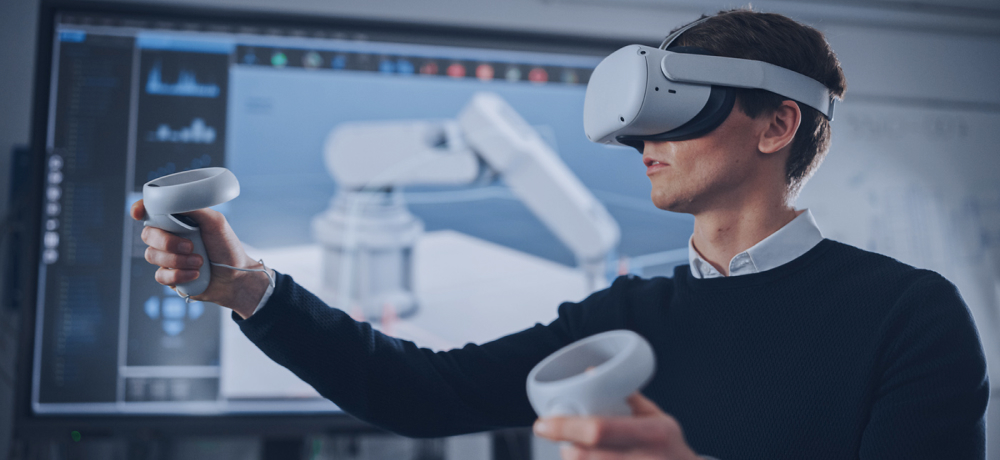
For years, AR and VR were seen as niche technologies — mostly for gaming, occasionally for marketing gimmicks. That’s no longer the case. Enterprises are finding real, high-value applications, and adoption is accelerating.
The shift is already happening. More than 171 million people use VR in some form, and China is leading the investment push, spending $5.8 billion on the technology. Training and simulation have emerged as some of the biggest use cases. Surgeons rehearse complex procedures in virtual operating rooms, and factory workers practice handling machinery without real-world risks. The result? Faster learning, fewer mistakes, and lower training costs.
Remote assistance is another major driver. AR-powered solutions now let experts guide technicians in real time, overlaying instructions onto physical objects. Industrial maintenance crews, field service teams, and even healthcare professionals are using AR to reduce downtime and improve efficiency.
Product design is also evolving. Businesses can iterate on virtual models in real time instead of waiting weeks for physical prototypes. This speeds up development cycles and slashes costs. At Innowise, we already have experience building VR simulation apps to help companies train employees, test workflows, and visualize complex environments before committing to real-world implementation.
Enterprise users are projected to dominate the VR segment, accounting for more than 60% of total revenue by 2030. This shift underscores the growing role of AR and VR in business operations, from workforce training to industrial simulations and real-time remote collaboration.
The technology itself is improving. AR & VR hardware is getting lighter and more powerful, and 5G is eliminating latency issues. Despite this, user experience remains a hurdle — motion sickness, clunky interfaces, and uncomfortable hardware are still barriers to adoption. Companies that solve these issues will dominate the space.
AR and VR have moved past the experimental phase. Businesses that integrate these technologies today will be shaping the next era of digital interaction. Those who wait will be playing catch-up in a world where immersive experiences are the norm.
“Many businesses used to think AR and VR were mostly for gaming or marketing stunts. But we’re building real stuff — training apps, design walkthroughs, simulations — and companies are loving it. It saves time, cuts down on errors, and just makes more sense than flying people in for everything.”

Sergey Molchanov
Head of AR&VR and blockchain
The biggest obstacle to AR adoption wasn’t the technology — it was friction. Until now, using AR meant downloading an app, dealing with platform restrictions, and navigating clunky onboarding. Every extra step lost users.
WebAR eliminates that problem. No downloads, no installs — just tap a link or scan a QR code, and you’re in. This makes AR experiences faster to deploy, easier to scale, and far more accessible. Companies can now introduce immersive digital interactions without the cost and complexity of native app development.
The impact is already being felt across multiple sectors. E-commerce is using WebAR for virtual try-ons — letting users preview clothing, makeup, or furniture in real time. Retail brands are integrating it into packaging, turning static labels into interactive product demos. Marketers are leveraging WebAR for ad campaigns that engage users instantly, while educators are creating 3D learning experiences directly in the browser.
With 5G rollouts accelerating and browser-based rendering improving, WebAR is set to become one of the defining software development trends of 2025. Businesses that adopt it now won’t just be keeping up — they’ll be leading the shift toward seamless, frictionless digital interactions.
I’ve always thought AR had massive potential, but adoption was held back by unnecessary friction. WebAR is changing that. When experiences happen instantly — no downloads, no onboarding barriers — the technology stops being a novelty and starts being useful. This shift won’t feel dramatic, but five years from now, we’ll look back and realize AR has become a seamless part of how we interact with products, content, and services.
Quantum computing, one of the latest technologies in software industry research, has long felt like a distant promise — powerful in theory but impractical in execution. That’s starting to change. While full-scale enterprise adoption is still years away, recent breakthroughs suggest practical applications are getting closer.
Unlike classical computers, which process data in binary (0s and 1s), quantum computers use qubits that can exist in multiple states simultaneously. This allows them to perform calculations exponentially faster than traditional systems, making them particularly suited for complex problem-solving in areas like material science, cryptography, and large-scale optimization.
Pharmaceutical research is already seeing the potential. Drug discovery relies on modeling molecular interactions at an atomic level — a process that can take years using conventional methods. Quantum algorithms can compress those timelines dramatically, cutting costs and accelerating the development of new treatments. IBM, Google, and Rigetti Computing are already working with pharmaceutical companies to push this forward.
The economic implications are massive. According to McKinsey, quantum computing could generate between $0.9 trillion and $2 trillion in value across industries such as chemicals, life sciences, finance, and mobility by 2035. Supply chains could be optimized in ways that aren’t possible today, financial modeling could reach new levels of precision, and material science could unlock breakthroughs in superconducting materials and next-generation batteries.
Investment is pouring in. The quantum technology market is projected to reach $173 billion by 2040, with quantum computing alone valued between $45 billion and $131 billion. As of December 2023, $6.7 billion had already been invested in quantum startups, supporting 261 companies worldwide. Governments are taking note, too — global government investment in quantum computing has surpassed $42 billion. Meanwhile, academia is ensuring a steady pipeline of talent, with 55 quantum technology master’s programs and 195 universities running quantum research groups.
Scientific progress is accelerating. In 2022 alone, 4,763 quantum-related patents were granted, and in 2023, there were 42,155 research publications in the field. The race toward commercial viability is moving faster than most people realize.
Yet challenges remain. Hardware instability, error correction, and the need for specialized quantum algorithms are still major hurdles. But history has shown that the barriers to transformative technology don’t last forever.
Most technology trends are about doing the same things, but faster. Quantum computing is different. It forces a complete rethink of what computing even is. The hardware is unstable, the timeline is uncertain, but the momentum is real. Industries that plan in decades, not quarters — pharmaceuticals, logistics, finance — are already making bets. That’s worth paying attention to.
The cloud changed computing — but it’s not the whole story. Instead of relying solely on distant data centers, edge computing processes data locally — on devices, smartphones, or nearby servers. This means real-time decision-making, reduced bandwidth costs, and improved privacy. Industries that can’t afford latency, like finance, healthcare, and industrial automation, are already moving toward edge solutions.

The market is responding fast. Edge computing is projected to generate $350 billion in global revenue by 2027. As 5G networks expand, the power of edge computing will grow, seamlessly connecting IoT devices, smart cities, and enterprise systems. Businesses adopting edge computing now aren’t just optimizing performance — they’re redefining how digital services are delivered.
This isn’t just about speed. Processing data closer to its source also strengthens security, reducing the risks of sending sensitive information across the internet. For sectors like finance and healthcare, where privacy is paramount, edge computing is becoming non-negotiable.
The cloud made computing more accessible. Edge computing makes it faster. Not everything needs to be sent across the internet to a data center. Some decisions need to happen in milliseconds, right where the data is created. As processing moves closer to the source, businesses will rethink what should run in the cloud and what should run at the edge. The best systems won’t choose one — they’ll use both.
Lately, we at Innowise have been seeing more businesses move to Shopify — not just startups, but established brands migrating from legacy platforms. This isn’t just another e-commerce tool; it’s becoming the foundation for how modern retail operates. The shift toward omnichannel commerce and social-driven sales is accelerating, and Shopify is at the center of it.

The reason is simple: frictionless selling. Shopify integrates directly with platforms like Instagram, Facebook, and TikTok, turning social media from a marketing tool into a full-fledged revenue stream. Brands no longer need to push customers toward a separate website — sales happen instantly, wherever people are already engaged. The lines between content, community, and commerce are disappearing.
Beyond social, Shopify’s strength is in automation. AI-driven chatbots, predictive search, and one-click checkout are setting a new standard for user experience. Features, like abandoned cart recovery and personalized recommendations, optimize conversion, keeping customers engaged without constant intervention. The numbers back it up — Shopify grew 20% in 2024, nearly three times faster than the global e-commerce market. Businesses on Shopify saw a 25% increase in online sales, far outpacing the industry’s 8% growth.
This isn’t just about online stores anymore. Shopify is redefining retail as a whole. Features like buy online, pick up in-store (BOPIS), ship-from-store, and seamless POS integration remove the friction between digital and physical shopping. Whether a customer clicks “buy” on their phone or walks into a store, the infrastructure is the same.
And let’s not forget the importance of payment systems. Shopify seamlessly integrates with both global payment platforms like Stripe and PayPal, as well as local payment solutions, all in just one click. This makes it incredibly easy for businesses to manage transactions, no matter where they’re operating.
At scale, this kind of efficiency compounds. Shopify now powers 4.8 million stores across 175 countries, proving that businesses aren’t just adopting it — they’re relying on it. And as AI capabilities expand, Shopify’s machine learning tools are driving fraud detection, automated marketing, and hyper-personalized shopping experiences.
Commerce is going where people are, and Shopify is building the rails. Social commerce, automation, and omnichannel retail aren’t trends anymore — they’re infrastructure. Omnichannel retail delivers a seamless experience across every platform where customers engage, from social media to in-store. Shopify integrates these touchpoints, enabling businesses to sell on platforms like Facebook, Instagram, and TikTok, while maintaining a unified experience. Tools like buy online, pick up in-store (BOPIS) and integrated POS systems connect the digital and physical worlds, ensuring smooth operations and frictionless customer experiences across all channels.
“Shopify just makes it easy. We’ve helped businesses switch from clunky platforms, and suddenly they’re selling through Instagram, TikTok, even in-store — all from one place. It’s not just a store anymore — it’s a full system that actually works.”

Dmitry Fyodorov
Head of PHP
More and more businesses are turning to low-code and no-code platforms — not just as shortcuts, but as legitimate development tools. Software is leverage. Low-code makes that leverage available to more people. Businesses that once needed full development teams can now build, automate, and scale with minimal engineering effort. This doesn’t replace developers — it redefines their role. Engineers move up the stack, focusing on architecture and optimization. Software is no longer just written — it’s assembled.
The reason is obvious: speed. Traditional development cycles are slow and expensive. Low-code platforms remove the bottleneck, letting companies launch internal tools, automate workflows, and prototype ideas without heavy engineering resources. It’s not about replacing developers — it’s about shifting their focus from routine tasks to solving high-impact problems.
This shift isn’t theoretical. The low-code market is projected to reach $16.5 billion by 2027, growing at an annual rate of 16.3%. The demand for custom software is at an all-time high, and there aren’t enough engineers to meet it. Businesses are filling that gap with platforms that allow “citizen developers” to build without writing a single line of code.
The real advantage here isn’t just accessibility — it’s flexibility. Many low-code tools come out of the box with connectors and integrations to popular services like SAP, AWS, NetSuite, PowerBI, and just about any database you can think of. AI-driven automation is making these platforms even more powerful, integrating machine learning, API connectivity, and workflow optimization into applications that used to require full-stack development teams. Enterprises are now using low-code for mission-critical systems, not just prototypes.
But this isn’t the end of traditional development. Engineers aren’t being replaced; they’re evolving. Instead of writing repetitive CRUD apps, they’re designing architectures, ensuring security, and optimizing performance. The companies that embrace this hybrid model — where automation and engineering work together — will build faster, scale smarter, and outpace the competition.
“I’ve seen teams go from idea to MVP in a few days using low-code tools. That kind of speed used to be impossible without a full dev team. But it’s not about completely replacing devs — it’s about letting them focus on the hard stuff while others build what they need.”

Eugene Shapovalov
Head of Mobile
Security isn’t just an IT issue anymore — it’s a business survival issue. Data is the most valuable asset in the digital economy, and companies that fail to protect it aren’t just risking breaches, they’re risking their entire business.
Cyber threats are getting worse. Ransomware attacks, supply chain breaches, infrastructure takeovers — what used to be concerns for large enterprises are now everyday risks for companies of all sizes. In 2024 alone, Change Healthcare lost 100 million patient records, Snowflake suffered a major breach, and CDK Global had to pay $25 million just to restore operations.
The cybersecurity market is already worth $245.62 billion, and it’s expected to grow at an annual rate of 12.9% through 2030. Not because companies want to spend more, but because they have no choice. The cost of ignoring security is too high.
The old approach — firewalls, antivirus software, and a hope-for-the-best mindset — is obsolete. Security now means real-time threat detection, zero-trust architectures, and continuous monitoring. Businesses that take a reactive approach will eventually pay the price. Those who prioritize security from the start will move faster, with fewer disruptions.
Every company optimizes for speed until it loses everything in an instant. Security is leverage in reverse: the more you neglect it, the more vulnerable you become. The shift is happening slowly — businesses are realizing that cybersecurity isn’t an IT expense, it’s the cost of staying in the game.
The latest software development trends aren’t just about new technologies — they’re about a fundamental shift in how businesses operate. AI isn’t just assisting; it’s making decisions. Blockchain isn’t just for speculation; it’s becoming a financial infrastructure. Low-code isn’t a shortcut; it’s a competitive advantage. The companies that move fast on these shifts will dominate. The ones that hesitate will be left optimizing systems that no longer matter.
The integration of technology with larger business and societal concerns is becoming impossible to ignore. Sustainability is now an economic force, not a branding exercise. Cybersecurity is no longer optional; it’s a prerequisite for survival. AI is redefining workflows at every level. The businesses that adapt to these realities — balancing innovation with practical execution — will be the ones that last.
Looking at the bigger picture, the winners in 2025 won’t just be the ones following trends. They’ll be the ones shaping them.
Right now, software development is driven by a few key trends: AI is taking center stage with agentic and generative systems. Low-code and no-code platforms are making development more accessible. Sustainability is no longer optional — green coding practices and efficient cloud usage are becoming the norm. And let’s not forget blockchain and AR/VR, which are moving from niche applications to mainstream business tools.
The cutting edge includes autonomous agentic AI that makes decisions on its own, quantum computing’s potential to tackle previously unsolvable problems, and WebAR’s ability to deliver AR experiences straight through a browser. These are no longer theoretical concepts — they’re starting to impact how we build, distribute, and experience software.
This year, it’s about doing more with less friction. Generative and agentic AI are making it faster to produce code and content. Low-code tools are turning non-developers into creators. WebAR is lowering the barrier to entry for AR. And IoT, paired with green technologies, is pushing businesses toward energy efficiency and sustainability.
I look for signal over noise — following a handful of trusted sources like Gartner and Forrester reports, reading thoughtful analysis from leading tech blogs, and listening to in-depth discussions in industry podcasts. Conversations with peers and keeping an ear to the ground in developer communities are just as important. The key is to constantly absorb insights while staying skeptical of passing hype.
The future is automation, sustainability, and seamless experiences. AI will handle increasingly complex decisions and workflows. Blockchain will power more than finance — it’ll secure supply chains, digital identities, and more. Developers will focus on building tools that are energy-efficient, scalable, and user-centric. In other words, the future isn’t just about faster code — it’s about smarter, more thoughtful software.
Dmitry leads the tech strategy behind custom solutions that actually work for clients — now and as they grow. He bridges big-picture vision with hands-on execution, making sure every build is smart, scalable, and aligned with the business.







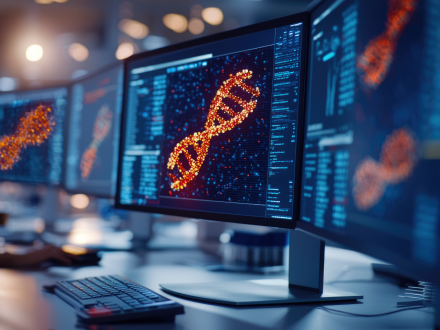
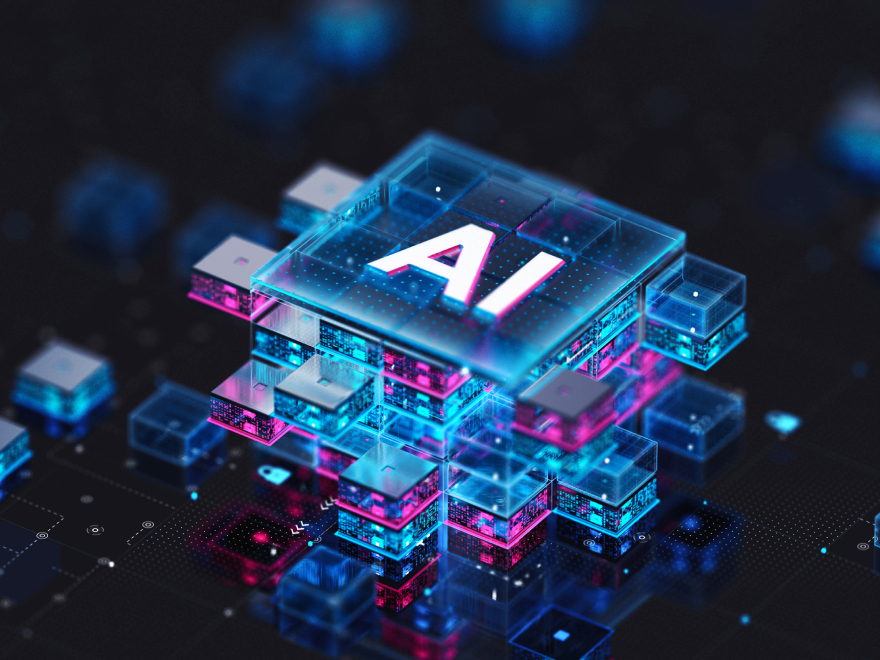



Your message has been sent.
We’ll process your request and contact you back as soon as possible.

By signing up you agree to our Privacy Policy, including the use of cookies and transfer of your personal information.